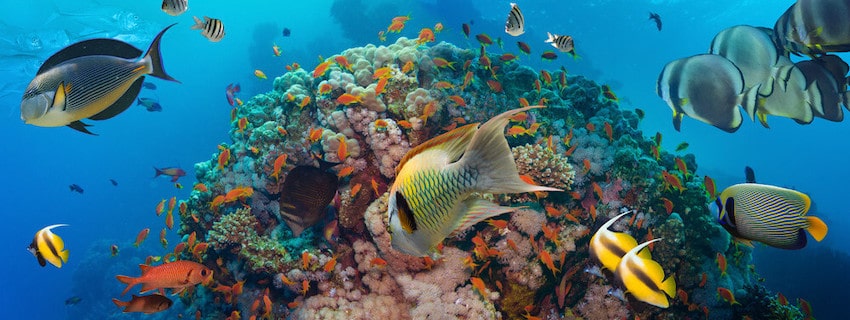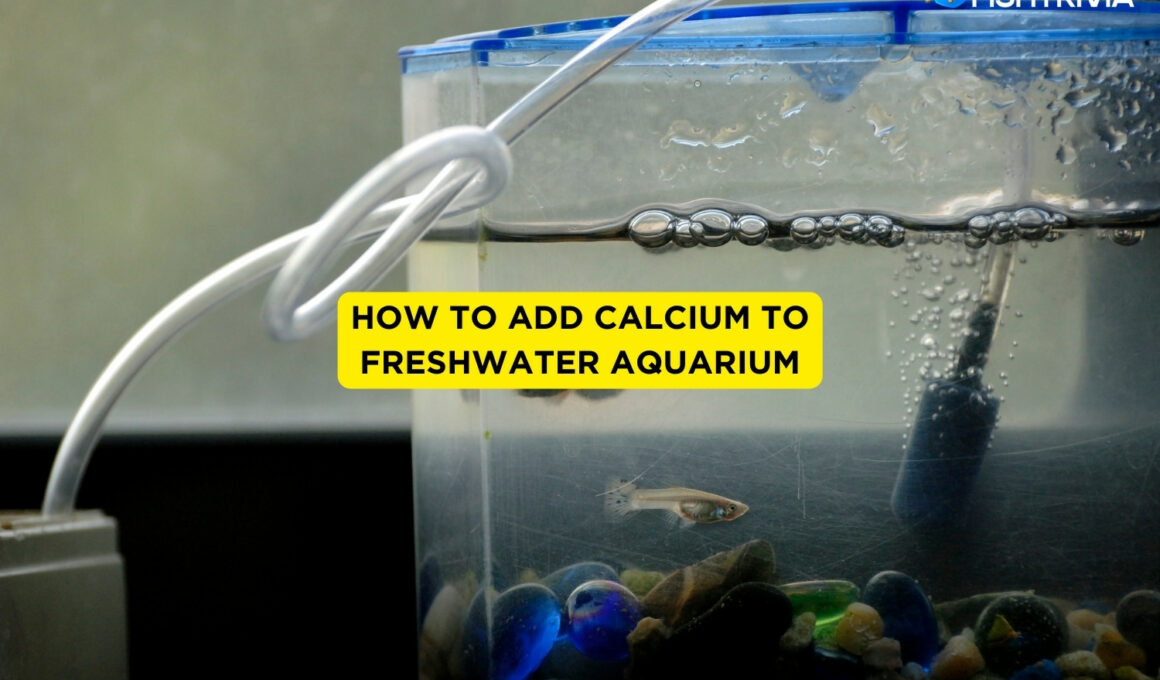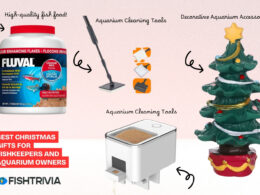In this article Show
Calcium is very important for every living being. Fish are found in nature, they have unlimited sources of calcium. But the fish you have in the aquarium, they needed to be supplied with calcium.
Aquariums are an ideal complement to your house. They not only bring personality to your bed, but they also make the place more vibrant. If you want dogs, but don’t spend too long at home, fish are an ideal choice, and like most species, it doesn’t take too long to go one-on-one.
Aquariums are an ideal alternative for people who revamp their houses, but upkeep is important to bear in mind. Calcium is known for its significance for shrimp, crabs, and especially snails.
The explanation is that calcium carbonate (from 30 to 50 percent) is one of the key components of the shrimp body. It is much more essential for snails, as calcium carbonate ( CaCO3) is around 95-98% of the dry weights of the coat of snails.
As we can see, calcium rests in shrimp, crab, crabs, and snails. Calcium is also so important for them that they can feel the amount of calcium in their environment and tend to remain in a high-calcium environment, as described in various studies.
But too much of it may hamper the lives of your aquarium. That is why we will be providing ways of adding calcium to your aquarium through the article. Let’s get started.
Also worth reading;
- Freshwater Fish for 10-Gallon Tank: Which Are The Perfect?
- Aquarium Heater Size: What Size Heater Do You Need in a Fish Tank?
- How Long Can Aquarium Fish Stay In A Bag?
- Best Ways to Clean An Acrylic Aquarium: Complete Guide
- What Paint Can I Use In An Aquarium That Is Not Toxic To Fish
Adding Calcium To Freshwater Aquarium
If your tank has various varieties of fish, you must note that all of them can have various specifications. For example, in winter, fish more vulnerable than fish that are capable of surviving cold weather might not last very long without heating.
Like fish, calcium, and diet can be consumed by shrimps. If the water contains sufficient calcium, the bulk of calcium is obtained from the tubing. Calcium can also mask the mineral deficit in water in the diet.
These two calcium sources should preferably both be in your tank. Magnesium preserves dissolved calcium which helps to digest calcium. This is why calcium and magnesium must be balanced (ratio 3:1).
Calcium Supplements for Snails
You should bring calcium into your aquarium if your fish tank has snails. In comparison to fish, in all temperatures, snails can live. You don’t have to do that and the snails can get their calcium from it if your tank has tap water.
Soft-corporate species are snails, all of which have evolved a difficult technique to conserve their delicate fabrics and shield them from predation, and to sustain the inner organization. This approach is focused on the creation of an exterior, calcified, rigid shell structure.
On the other side, you can feed your snail with calcium-enriched food if your tank has fresh water. These can be bought from the nearest supermarket or pet store in the vicinity. They are cheap and readily accessible, so you get calcium-enriched foods anytime you go to the food supply, even though you have no time to purchase those foods for your snails.
When you don’t want the molting of your shrimp. If you can see that the shells, holes, trousers, or shades of your snails are beginning to erode (turn white). Calcium in water is the most possible source.
New spinach is a good example of enriched calcium food. Spinach is very rich in calcium, but you must be very vigilant – not just chuck a leaf of spinach into the water.
Your snail can hit the substratum very quickly, so wait before it does that. The entire thing could be finished very small, so check the substratum only after a few hours.
It is just going to float at the tip, making a mess. Take the spinach leaf instead and put it in a little cup. Fill in the bowl with water and microwave both. Let it cool for at least 60 seconds after you stop and then place the leaf on your tank substrate.
Calcium Sources For Aquarium
This is a list of calcium sources for aquarium owners’ most common options.
1. Eggshells
The eggshells contain a lot of calcium, so if you have no other choice it is a smart idea to apply the eggshells to your aquarium. Place it where the fish can not see.
Be careful-eggshell will quickly cause a mess. Calcium carbonate (~98.2%) and other microelements, including magnesium, boron, copper, manganese, molybdenum, sulfur, silicon, and zinc, comprise chicken eggshells. Shell membranes contain 69.2% protein, 2.7% fat, 1.5% humidity, and more.
Boil eggshells for 5 – 10 min to destroy any dangerous bacteria in warm water to produce an eggshell powder. If you boil it longer, it is easier to drain the membrane.
Make sure you are aware of the calcium levels that people in your water can use before you add calcium to your aquarium. If the calcium is too strong, you may need to continue washing your filters as soon as possible.
2. Bones (Cuttle Fish)
Cuttlebones are made of calcium carbonate, so adding a few to the freshwater fish tank is often a smart idea. This is another famous cheap commodity. In pet shops, you will find it.
Bones of cuttlefish are extremely porous, and only pure calcium is necessary. They’re fragile too, so just take a little slice off and drop it into the tank.
The nice thing about the bones is that they eventually melt in the water and release a lot of calcium which can be used as required by shrimps and snails. These shells will supply your species with calcium and enhance the appearance of your aquarium.
The bones of the cuttlebone very slowly disappear. Therefore, the water parameters won’t change easily. That also means you won’t overdose. You’ll have time to respond, at least. Do not bring it in filters. Often, because of the residual organic matter, it can create an incredibly irritating smell.
3. Mineral Calcium
Water supplements are another means of applying calcium to the freshwater aquarium. You can purchase liquid nutrients at inexpensive rates from your closest fish market.
You can use Shrimp King Mineral if your aquarium has shrimps. There are additional minerals in it. Established montmorillonite clay mineral, calcium-free carbonate, and useful red algae are the trace elements in all shrimps that contain a great deal in calcium and other minerals. The natural calcium from the coral red algae is especially highly bioavailable and can be used effectively by shrimp.
4. Shells and Corals
With shrimp and snails, wondrous shells are healthy. In reality, from the time you put it in the tank, you would love it. These coats improve the hardness of the water, however, steadily they do so. One shell will dissolve for 2 to 4 weeks.
Start from the tiny wondrous shell as this is their first experience. Wonderful coats have the bonus of water clarity. More than chipping crushed coral, it is much simpler and cheaper.
Corals are the best way to raise freshwater aquarium’s calcium percentage. No additional work is needed; just add the corals to your aquarium floor. Ground corals contain minerals such as calcium and are a nice plant for which your aquarium can be painted. You can clean the tank or change the water anytime you want. Be sure that you add it to your list, so next time you don’t forget.
5. Calcium Supplement Pills
Calcium Supplementation Tablets for all invertebrates are outstanding nutritional supplements. Every pearl contains both natural minerals and inorganic minerals to prevent mineral shortages, leading to holes in snail shells, failed shrimp molts, sluggish growth, and a high mortality rate among young people.
They contain vegetable extracts and herbs along with minerals to have greater nutritious content. When they have enough supplies and shells tend to be cleaner and thicker, snails often grow faster.

Maintaining Aquarium Environment
Additional Calcium of course benefits the lifespan of your aquarium lives. But it can hamper the life of beneficial bacteria which you will want for your fish. To do that you have to properly maintain the environment. So follow the instruction below;
1. Removing
Each time you purify the aquarium, you don’t have to adjust the water. Every couple of months water can be altered, just make sure the period does not take long, so it can lead to the death of plants and fish.
Make sure you first extract the fish before cleaning the tank. You should store your fish in there and fill a bucket with tap water. Until you start the cleaning process, don’t forget to remove the cleaner, substrata, heater, and all decorations.
2. Cleaning Water and Gravel
Take them out and rinse them if your tank has many décorations, like lava rocks or plastic plants. Thus, all the bacteria and waste that may be bound to them can be eliminated. A smart way to keep the tank clean is to scrub the gravel of the tank from time to time. This helps you to quickly eliminate any waste and fuel that your fish could not have eaten.
A smart practice is to monitor the water temperature every day to ensure that the water is safe and at the correct temperature. During the day it gets too cold or too hot, it is important to regulate the water temperature.
By putting a thermometer inside the tank, you can check the temperature. You will know whether or not the heater is sufficient for your fish. You simply should open windows when it’s too cold to preserve the tank until the sun.
Conclusion
Calcium is important to the overall shell production, shrimps, crayfish, crabs, and snacks’ optimal growth, and survival. We can use various ways to supply calcium to the shrimp and snail tanks, depending on the tank configuration.
If you use RO water in your pool, for example. Besides remineralized, special sources, and natural food sources, we will not use any other mineral sources. If you use tap water in the tank, we can only use additional mineral sources such as Cuttlebone Bones, Wond Shells, Tams, etc.
Beware of the reasons that we discussed above before applying calcium to your freshwater aquarium. Calcium is essential to sustain your loved fish. Let it count. Just make it count.










